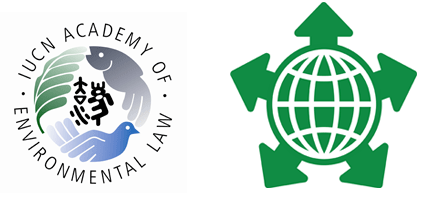Event Title
Designing a Geoengineering Governance Regime
Location
Room 302
Start Date
4-7-2012 1:15 PM
End Date
4-7-2012 2:45 PM
Description
This paper is one chapter of a book project in which I argue for reorienting how our legal institutions handle emerging and potentially controversial technologies. Traditionally, government has promoted technological innovation by providing research funding, intellectual property protection, and other supportive policies. Attention to adverse effects has tended to come much later, if at all. There are two fundamental problems with this approach: (1) it fails to consider in a timely manner the various effects of technology, including effects on health, environment, and society; and (2) it lacks meaningful public input in the development and use of technologies that affect various aspects of our lives. Granted, technologies can be transformative in positive, negative, and unexpected ways. However, our laws and institutions should be more forward-looking, anticipating future technological developments as well as adverse effects. In addition, our laws should provide more information about technological risks and allow citizens a greater voice in technology management decisions.
Geoengineering refers to a variety of risky, controversial, and untested techniques to “engineer” the Earth’s climate at a planetary scale. The goal of geoengineering is to combat climate change by either removing carbon dioxide from the atmosphere or blocking a fraction of the Sun’s radiation. Proposed geoengineering techniques include ocean fertilization, in which large quantities of iron would be dumped into the ocean to stimulate phytoplankton growth, and stratospheric aerosol release, in which tiny sulfate particles or other materials would be sprayed continuously into the stratosphere. Because geoengineering would necessarily have global effects, it raises significant questions of international technology governance. Although the global dimensions of governance will complicate geoengineering oversight, recognition of the early need for governance offers some hope for successfully adopting a proactive approach. The paper briefly reviews international law potentially applicable to geoengineering and suggests recommendations for governance.
Given the significant and global effects that geoengineering would have, formal international law (i.e., treaty-based law) seems necessary, but it tends to be slow and not terribly effective. Moreover, international legal institutions often are subject to criticism as undemocratic. Bottom-up self-governance, however, seems an even less attractive option, given their lack of accountability and the likelihood that scientific and industrial interests would dominate such an approach. Ultimately, we will need for both formal and informal oversight, as well as mechanisms for incorporating greater public participation.
Designing a Geoengineering Governance Regime
Room 302
This paper is one chapter of a book project in which I argue for reorienting how our legal institutions handle emerging and potentially controversial technologies. Traditionally, government has promoted technological innovation by providing research funding, intellectual property protection, and other supportive policies. Attention to adverse effects has tended to come much later, if at all. There are two fundamental problems with this approach: (1) it fails to consider in a timely manner the various effects of technology, including effects on health, environment, and society; and (2) it lacks meaningful public input in the development and use of technologies that affect various aspects of our lives. Granted, technologies can be transformative in positive, negative, and unexpected ways. However, our laws and institutions should be more forward-looking, anticipating future technological developments as well as adverse effects. In addition, our laws should provide more information about technological risks and allow citizens a greater voice in technology management decisions.
Geoengineering refers to a variety of risky, controversial, and untested techniques to “engineer” the Earth’s climate at a planetary scale. The goal of geoengineering is to combat climate change by either removing carbon dioxide from the atmosphere or blocking a fraction of the Sun’s radiation. Proposed geoengineering techniques include ocean fertilization, in which large quantities of iron would be dumped into the ocean to stimulate phytoplankton growth, and stratospheric aerosol release, in which tiny sulfate particles or other materials would be sprayed continuously into the stratosphere. Because geoengineering would necessarily have global effects, it raises significant questions of international technology governance. Although the global dimensions of governance will complicate geoengineering oversight, recognition of the early need for governance offers some hope for successfully adopting a proactive approach. The paper briefly reviews international law potentially applicable to geoengineering and suggests recommendations for governance.
Given the significant and global effects that geoengineering would have, formal international law (i.e., treaty-based law) seems necessary, but it tends to be slow and not terribly effective. Moreover, international legal institutions often are subject to criticism as undemocratic. Bottom-up self-governance, however, seems an even less attractive option, given their lack of accountability and the likelihood that scientific and industrial interests would dominate such an approach. Ultimately, we will need for both formal and informal oversight, as well as mechanisms for incorporating greater public participation.

